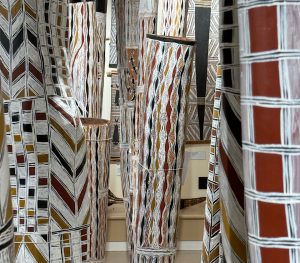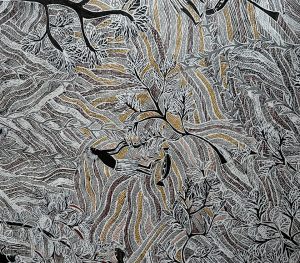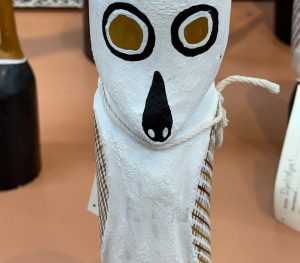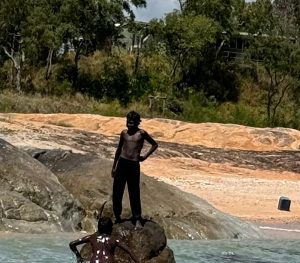We could make T S Eliot proud with the borrowing from his poem title, however the Yolngu people of East Arnhem in Australia may have never known the power of their words. The “bark” petition submitted to the parliament in the late seventies against the development of a bauxite mine in their lands only attained a compromise. The government permitted the development with minor concessions to the tribal people. The hollow men might be the parliament or the hollow trees used to store dead bones as memorials… the hollow trees are now sold as art and kept in museums.

The pattern patterned poles evolved into storage for bones. In the intricate repeats a story is woven about matrilineal and patrilineal connections. About many mothers and many fathers. Stories about traditionally arranged partnerships and the apparent restrictions of moti patterns have sent many away in amazement. All I understood was a traditional practice of birth order responsibilities and the connection to lessons learned from the fathers and the lessons learned from the mothers. And in the stellar complication of patterns art evolved as a way of tracking. A connection to the patterns of family and many sisters and many brothers.

The masks hint at more than history the also point to belonging and the natural ancestor.

Once outside again, the children playing on the rocks, proclaiming lordship over a momentary high point. All this reminded me once again that tradition was interesting, religion is interesting, but to keep grounded, to stop from becoming the hollow men this playing in the tidal waters waiting till the next high tide dethroned. There in the field above the tide line, the elders danced a remembrance for all their children, including us.

